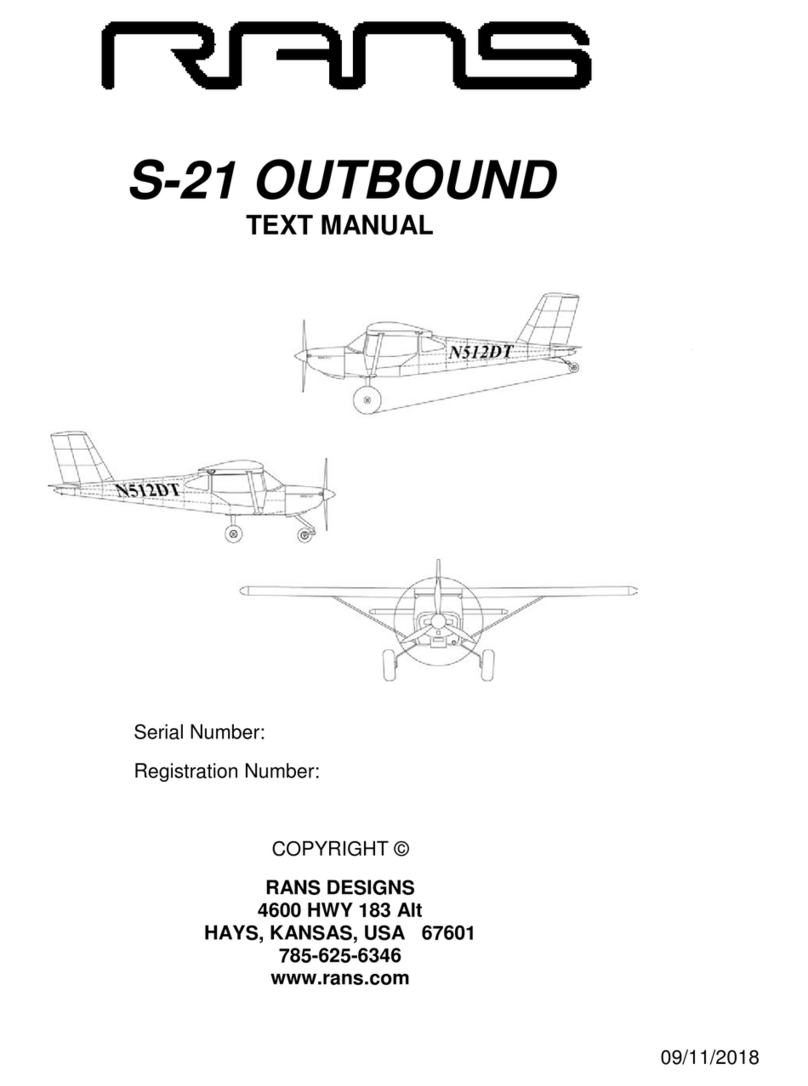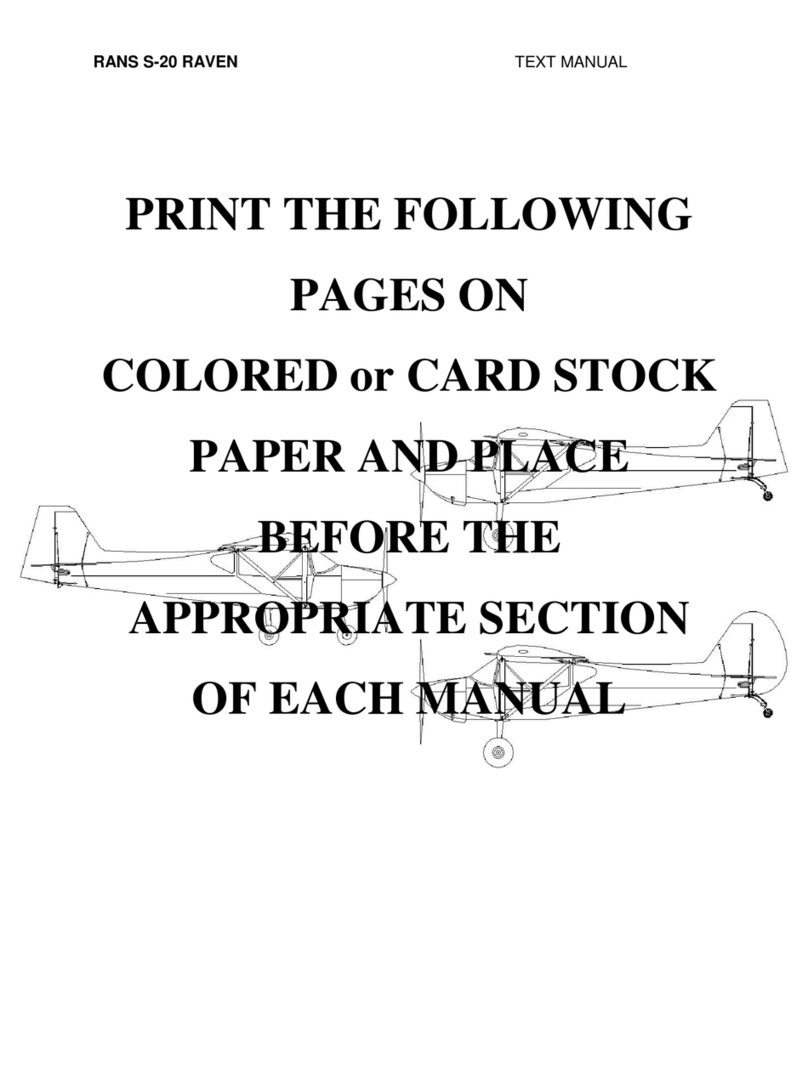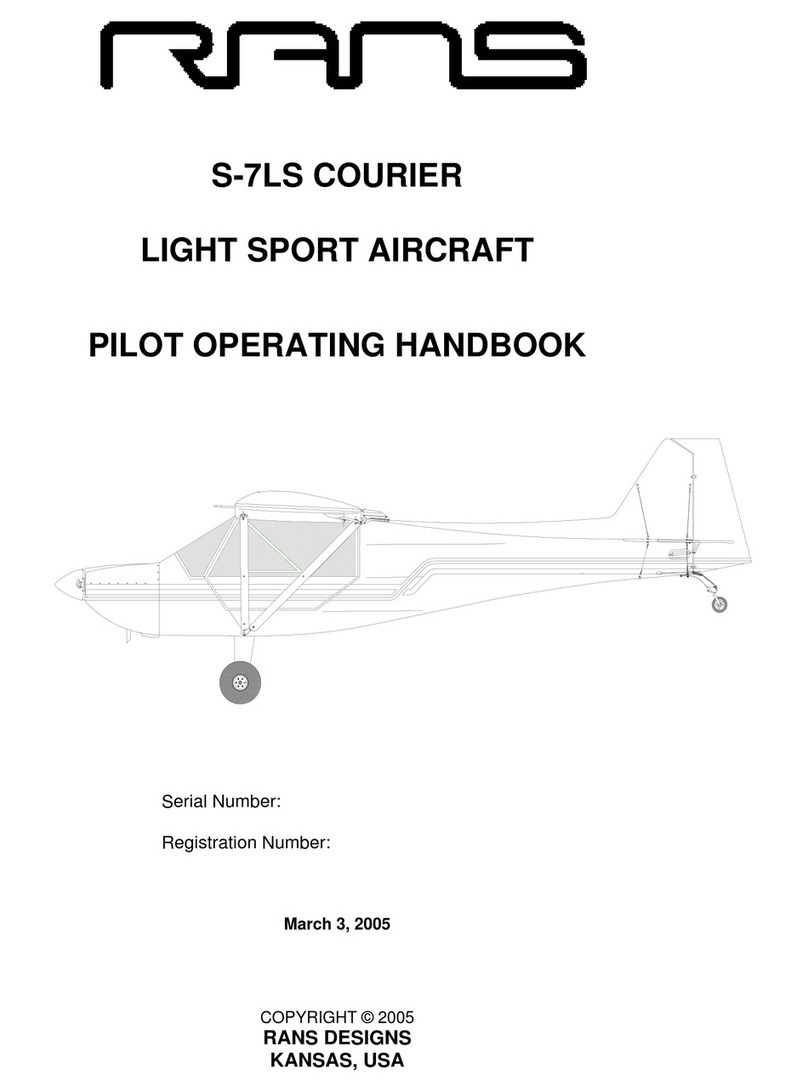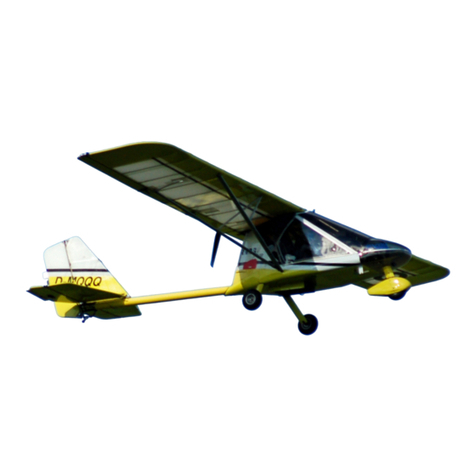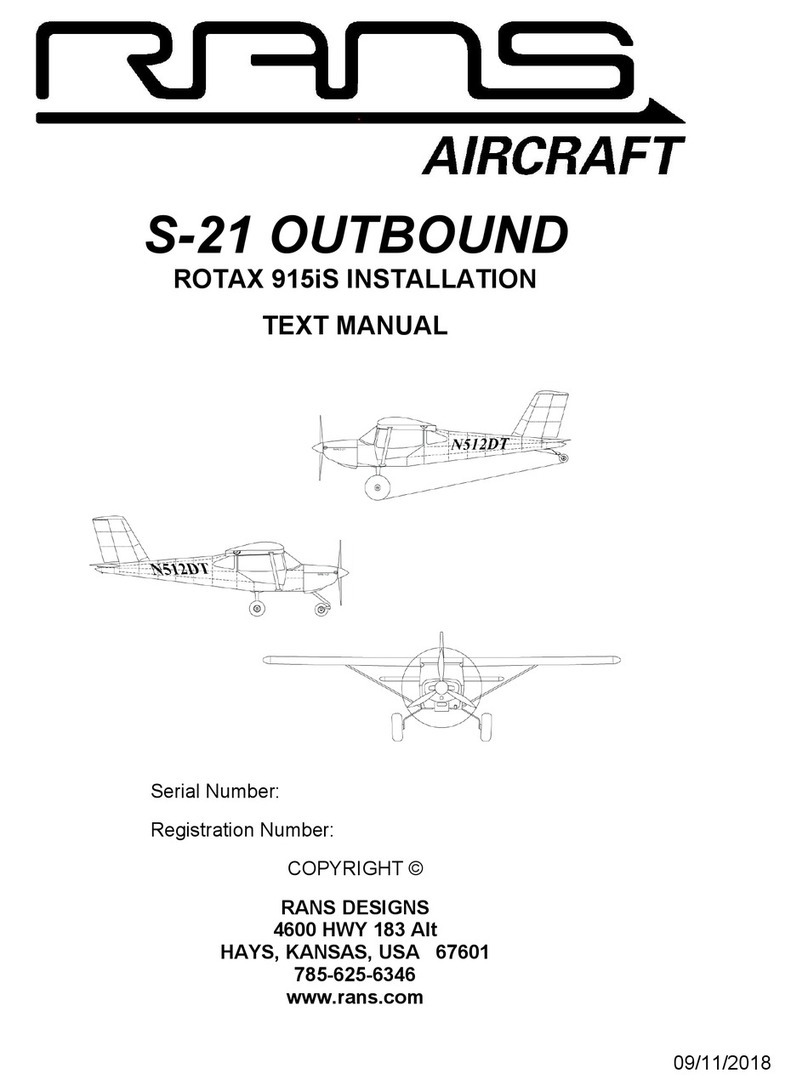
RANS S-20 RAVEN TEXT MANUAL 00-07
RANS S-20 RAVEN
AIRCRAFT TOOL LIST
The following is a list of tools that will be helpful when assembling your RANS aircraft.
HAND TOOLS
Pliers Safety Wire Pliers
Needle Nose Pliers Linesman Pliers
Side Cutters Electrical Wire Stripers
Aviation Snips Pop Rivet Tool
Hammer Click Punch
Rubber Mallet* Ball Peen Hammer
Center Punch Drift Pin & Punch Set
Screwdriver Set Safety Glasses
Several Small Clamps (Stanley quick clamps work well) Wrench Set SAE & Metric
Socket Set – SAE & Metric Ruler & Tape Measure
2 or 4 ft. Level
Utility Knife Hole Saw*
Set of Drill Bits (sizes listed below)
Hack Saw
Fluting Pliers Scotch-Brite Pads
1/2” & 3/4" Uni-Bit® Step Drill
Digital Protractor*
Pop Grip Dimpler for 1/8” holes Files
Cleco Pliers Silver #40 Clecos
Copper #30 Clecos Gold #11 Clecos
POWER TOOLS
Electric Hand Drill
Small Electric Grinder
Dremel* Bench Disk Sander*
Soldering Gun/Hot Knife Heat Gun*
CD/MP3 Player* Right Angle Drill and Bits
It is highly recommended to use a pneumatic
riveter.
RANS uses these pneumatic riveters.
Marson
V2
lightweight pneumatic riveter P/N
79014
MSC Industrial Supply Co. P/N
04053278
LUBRICANTS, ADHESIVES, TAPES & ETC
Small Can Lithium Grease Clear Silicone
WD40 Super Glue
Lubricating oil Loctite Blue Threadlocker
DOW 730 Sealant or similar 3M Super 77 Spray Adhesive
Thread Sealant 1/4” wide Double Stick Tape
Safety Wire Hi-Temp Silicone Seal (RED)
Clear Plastic Tape (anti-chafe) 1” Acrylic Foam Tape (2-sided)
Adhesive backed Velcro Masking Tape
White Lightning Bike Chain Lube or similar LORD Fusor 703 rep/Cleaner
LORD Fusor 108B/109B Adhesive, Plunger & Mixer Tips
